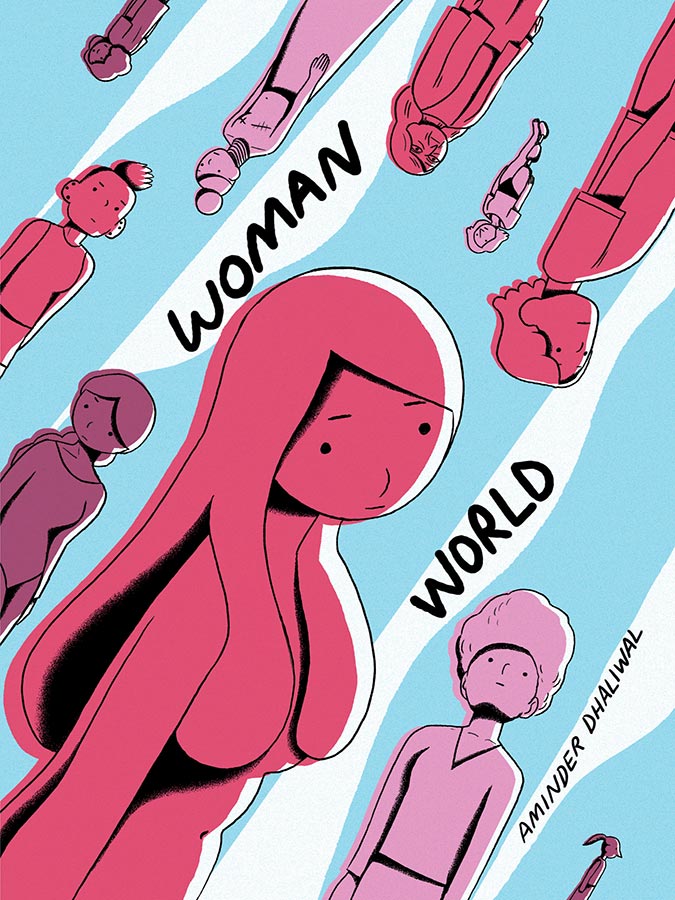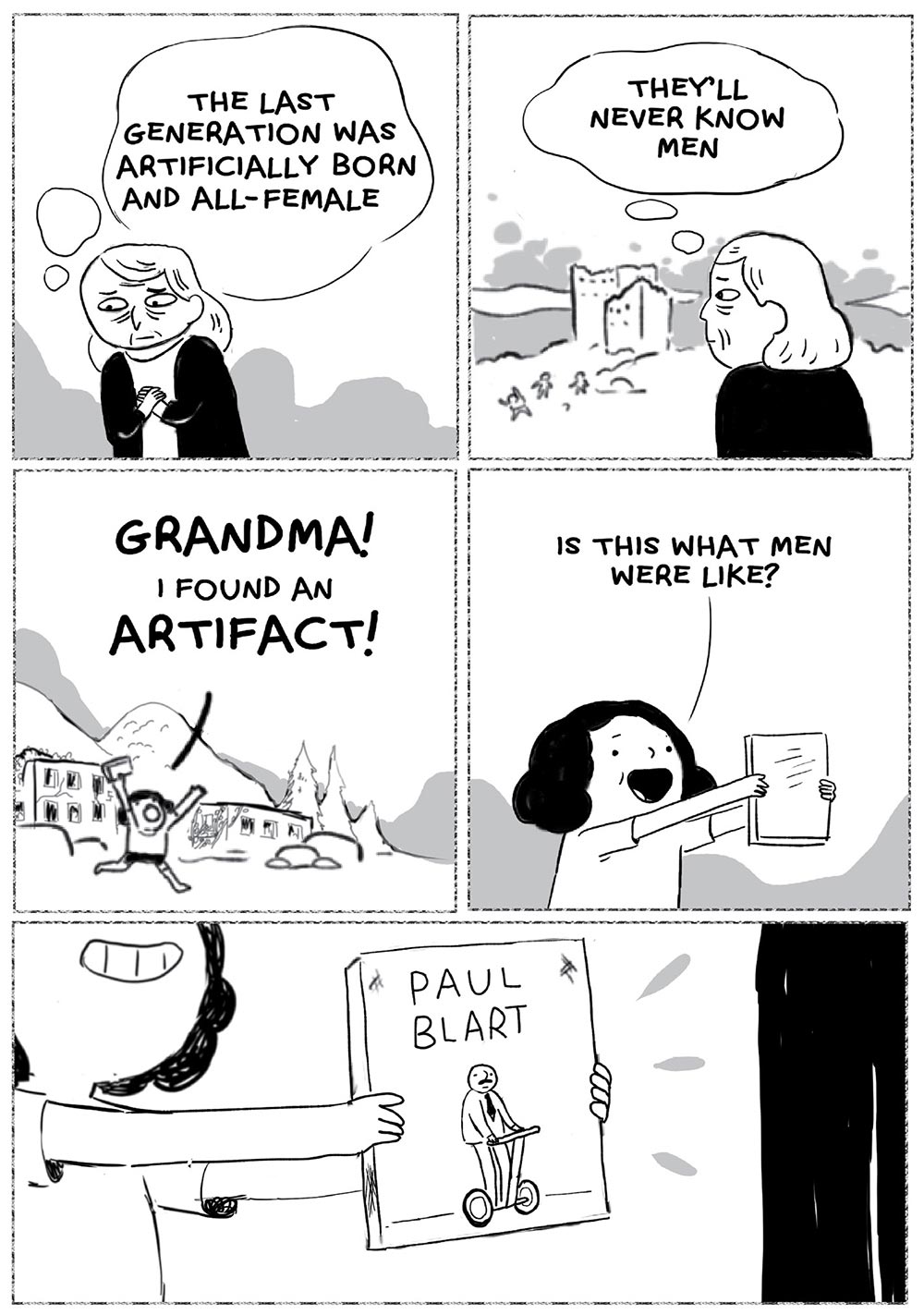In celebration of all things art, Room collective member Rose Morris spoke with illustrator, writer, and animator, Aminder Dhaliwal. Originally from Brampton, Ontario, she currently lives in Los Angeles where she works as director of Disney TV Animation.
Did you know Room is currently calling for visual art submissions for our Annual Cover Art Contest as judged by Syrus Marcus Ware? The first place winner will receive $500 and publication on the cover of an upcoming issue! We also accept art submissions, including illustrations and comics, throughout the year.
In celebration of all things art, Room collective member Rose Morris spoke with illustrator, writer, and animator, Aminder Dhaliwal. Originally from Brampton, Ontario, she currently lives in Los Angeles where she works as director of Disney TV Animation.
Aminder Dhaliwal’s popular web comic, Woman World, which was published serially on Instagram, has recently been compiled and converted to print in the form of Dhaliwal’s debut graphic novel of the same title. Woman World (Drawn & Quarterly, 2018) is a humourous, heartfelt story set in an imagined future world where men have gone extinct. I chatted with Dhaliwal about web versus print publishing, dystopian fiction, and how feminism can (and should) be funny.
ROOM: Do you think of yourself as a writer or illustrator first? Or are the two inseparable for you?
AD: Writing and illustrating are inseparable for me, I think of stories visually. There are times where one is louder than the other but mostly they’re balanced.
ROOM: When Emiko finds the Paul Blart DVD [in Woman World], she becomes amazed by it just from looking at the cover. The image is all she needs to create a whole narrative in her head without seeing the movie. Can you talk a bit about the power of images and how graphic novels use this power?
AD: The visual medium of graphic novels is so powerful. On one hand there are simple benefits like focusing on dialogue (rather than descriptive writing). But there’s also the added bonus of visual humour (always read background elements for puns), and rhythm—like the choice in how to layout a page or using silent panels as breathing space to allow the reader to digest a moment, and abstract expression. If a character feels overwhelmed, you can literally draw them drowning under pressure.

ROOM: How do humour and feminism work together in Woman World? Or, if you prefer, in general?
AD: I think humour and feminism pair well together. In Woman World, since the men are already extinct the women create a feminist base and the humour layers on top as the comics explores the women’s insecurities and daily problems.
ROOM: Dystopia and utopia are recurring themes in Woman World. The characters often look back to the time when men still existed as a utopia and see their time as more of a post-apocalyptic dystopia, while I think readers will see Woman World as more of a utopia. How do you see the relationship between utopia and dystopia?
AD: We have a habit of being overly nostalgic of the past, that’s what the Women of Beyonce’s Thighs do—they assume the world used to be better than it was. And the readers generally view Woman World as escapist fantasy, so of course it seems utopian. I suppose it’s like optimism and pessimism, it all depends on what you choose to focus on. In Woman World, the moments I’ve made into comics are usually moments of gentleness and happiness between the women, I could have chosen to focus on the darker parts of the world—more of the ruins, more of the potential extinction of humankind, but . . . meh!
ROOM: Do you think we currently look back in time and ascribe the past with utopia status the way the characters in Woman World do?
AD: I can’t speak for everyone, but I definitely have a habit of looking back into my own past and assuming I was happier then. It’s a constant struggle to remember that things were good then, but things are also good now. The past is familiar and explored and so it has a coziness about it.
ROOM: How does publishing in print versus on the web feel different?
AD: I was surprised at how different print felt. I was overly confident that I could transfer the Instagram comic seamlessly to print (it kind of felt like the problem-solving part was over and print would be about aesthetic) but boy, was I wrong. There were a lot of comics that read differently when they were panelled up on to a page. For example, pacing is different on paper than web. I played around with panel sizes and details in panel to attempt to recreate the same pacing. There’s also a way to use blank space in a more moody way on print. It’s been a learning experience and I truly love how different the printed book feels compared to the Instagram.
ROOM: Are you working on or planning any new projects currently?
AD: Right now I’m just trying to enjoy time off. I want to give it some sort of official name, “Project Sleep” maybe? If it has a name I think I’ll take it more seriously.

Photo credit: Kenneth Hung














